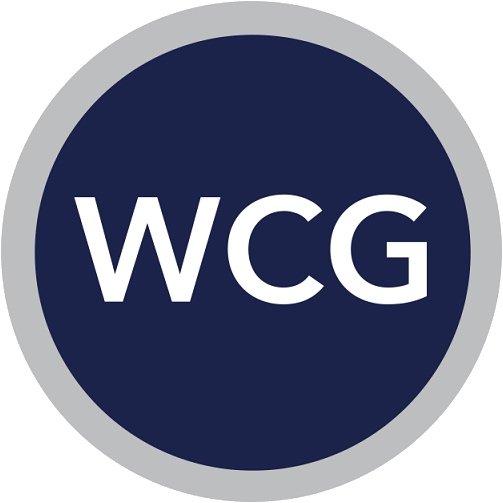The Complete Guide to Using A Job Description To Craft The Perfect Application
Photo by Glenn Carstens-Peters on Unsplash
The Dreaded Job Application….
Completing a job application can be a daunting task - especially when so many applications seem to go into a “black hole.” It can seem like you are simply regurgitating information from your resume, which is a drain on your time. There is a better way to complete a job application so that it stands out from the competition. If you are asking yourself how to make your job application stand out or what is the right way to complete a job application, you are in the right place!
Several months into her job hunt, Mary was starting to wonder these same things. After completing numerous applications, she still had not been contacted for an interview. What was she missing? What was she doing wrong? How could she differentiate herself in the market? Mary reached out to the experts at The Wilbanks Consulting Group to seek guidance, and she quickly learned that her candidate profile and resume likely wasn’t being seen by an actual person…..it was getting rejected in the Applicant Tracking System (ATS). While she was qualified for every position to which she applied, she hadn’t had an actual hiring manager or recruiter review her resume because it was rejected by software systems before it ever came across their desks. She wasted hours of time and got her hopes up countless times without ever being a serious candidate.
After working with The Wilbanks Consulting Group, Mary learned the necessary steps to elevate her profile to ensure it would make it through the Applicant Tracking System and onto the desk of a real person. The Wilbanks Consulting Group partnered with her to design a resume and LinkedIn profile that highlighted her skills and potential, was visually appealing, and made it through the ATS. They then supported her through the interview process, so that once she started getting interviews she was able to secure her dream position.
What are Applicant Tracking Systems?
Applicant Tracking Systems (ATS) are used by companies to streamline and make the hiring process more efficient. Job postings can easily bring in hundreds of applications, which is tedious for even a team of recruiters to review. To alleviate time involved and make the process more effective for the candidates and company, employers have turned to software to streamline processes and expedite hiring decisions. In fact, according to Jobvite, at least 90% of Fortune 500 companies use Applicant Tracking Systems in the recruiting process. These systems provide efficiencies and benefits for companies, as they can interact with job posting sites, track all candidate data, streamline communications with candidates, and conduct initial screenings to filter out applicants who are not qualified. But this last benefit to employers can be damaging to an applicant if you don't know how to get through the Applicant Tracking System.
Applicant Tracking Systems use artificial intelligence to scan resumes and job applications for keywords, using algorithms to rank candidates based on skills and experiences. While this benefit is helpful in conducting an initial screening of all applicants, it can falsely assume a candidate is not qualified if there are not enough keywords used.
Think of the ATS as the gatekeeper for your resume and job application. As a candidate, if you don’t have a strategy to complete the job application and if you have not generated keywords that match the job description in your profile, you will not make it past the gatekeeper to actually be considered by an individual. It is critical to consider the ATS every time you apply for a job. Each job description will have unique identifying words that should be considered when updating your resume and completing a job description. But that’s not all. Keep reading to find helpful tips to land your dream job, even when the employing company utilizes an Applicant Tracking System.
How Do I Get Through the Applicant Tracking System?
Applying for a job is tedious. And with software technology, it becomes even more time consuming to ensure you are taking the necessary steps to elevate yourself as a preferred candidate. When applying for a role, you need to ensure that your job search tools (e.g., resume and cover letter) will crack through the algorithms of artificial intelligence. When you think about the time it takes to complete a job application without these extra demands from the ATS, the overall job search process can seem daunting! However, did you realize that you have a secret tool to use when completing the job application?
Effectively Using the Job Description
The job description provides a wealth of information that you can use to elevate your resume and your ranking amongst other candidates. Incorporate these simple steps to make sure your resume gets noticed and breaks through the Applicant Tracking System:
Review the job description, looking for required skills and job duties. When reviewing the job description, either print or copy the text into a Word document. This allows you to easily highlight (physically or digitally) the top skills and job duties required. Pay particular attention to the frequency for which skills are used. Skills that are listed more than once are of critical importance to the company, and thus to your application.
Ensure your resume showcases skills required. After identifying the skills required, review your resume to see if you have inadvertently left off any requested skills. Does the job require a skill for which you have experience, but you have not included on your resume? If so, this could be as simple as adding the skill to the appropriate “Skills Section” on your resume. Or, you could add an accomplishment that demonstrates mastery of the skill.
Look for words that can easily be changed/swapped. For instance, if you use the term “budget," but the job description specifies “forecast,” this is an easy change on your resume. Similarly, if you use the term “employee,” but you notice the job description says “team member,” you can easily adapt your resume to match the terminology used.
Clearly define your education/certifications/licenses. Some roles require certain levels of education or certifications. Make sure that you are defining these basic requirements on your resume and in the job application. If a license is required, and you have not specifically listed it, this might be an automatic reason for the ATS to reject your application. List all of your credentials on the resume and in the job application.
Write your objective with the job in mind. Many job applications will ask for your “objective.” This is similar to the summary on your resume. It states who you are and what you would bring to the role. When writing the objective, make sure you are considering the job description and addressing the requirements of the role. State how you will meet the job expectations based on your past accomplishments.
Utilize metrics and quantitative accomplishments. It is much more impactful when a candidate states that he increased sales by 72%, as opposed to just stating “increased sales.” Whenever possible, utilize metrics to show the magnitude of the accomplishment. And remember, sometimes the actual value is more impactful, when other times the percentage seems more impressive (e.g., created additional $5M in revenue vs. increased sales by 2%). While the metric might not help you through the ATS, it will definitely aid in your advancement through the recruitment process, once you make it to the hiring manager’s review.
Other Tips for Successfully For Navigating Job Applications
In addition to refreshing your resume to match the job description, it is important to follow some additional tips to get through the Applicant Tracking System.
Apply to roles for which you are qualified. During a job search, some people start to cast a net wide, thinking it will produce better results. But if you are spending time applying for roles that you aren’t qualified for, or you are spending time on roles that don’t even interest you, it is a drain on your time, energy, and emotional well-being. It is better to spend more time on an application that is a great fit, rather than apply on more roles with that same amount of time.
Apply to only desired roles at one company. Similarly, you may have a strong desire to work for one company, and thus you apply for every role that could possibly fit your background with that company. This demonstrates to the hiring manager and recruiter that you don’t have direction or true insight into your skills and capabilities. It is more impactful if you take the time to look at all the job openings with the company and only apply for those that you possess the appropriate qualifications. This will show you are targeted and deliberate in your job search process.
Use a professional email address. Many people create email addresses to be “cute.” But when you are applying for a job, you want your email address to be professional and identify who you are. In fact, according to CareerBuilder, 35% of hiring managers see an unprofessional email address as a dealbreaker. If you have a more common name, it might take more time to come up with an email address. But take the time to find the right email address. Consider adding your middle initial, middle name, credentials, etc. to have a professional email address. You don’t want a recruiter contacting you at “partyboy@mailserver.com;” rather, it looks much more professional to contact “johnwsmith@mailserver.com.”
Be consistent with your name. Often people are commonly known by a nickname; however, they put their legal name on their resume. If you fall into this category, be consistent in your naming. Make sure that you use the same name on the resume, job application, and LinkedIn profile. It is confusing to employers when you use different names. It is fine to use your nickname on your job search tools - the key here is consistency.
Upload your resume in the preferred format. Some Applicant Tracking Systems will require a certain file format for uploading your resume (.docx or .pdf). Whenever possible, use the pdf version, as it will lock the formatting for the reader. However, not all Applicant Tracking Systems will properly read the pdf file, so make sure you are loading the recommended file type when uploading your resume.
Pay attention to detail. As simple as this sounds, pay attention to the questions. Make sure you are providing proper answers, as opposed to rushing through to complete the application. Spend time reading and re-reading the questions, so that you can ensure you are answering them correctly. And once you write your answer, proof-read what you wrote to ensure it makes sense and conveys the appropriate message.
Upload a cover letter. Always upload a customized cover letter for each position. While not always required, this is a way to differentiate yourself and show that you are willing to exceed requirements. Remember to utilize the required keywords and skills from the job description in the cover letter, showcasing how you have demonstrated these skills in previous roles.
Pro tip: If there is not a separate upload option for the cover letter, you can add the cover letter as the first page of your resume, and save as one document before uploading.
Limit formatting in your resume. Often, an ATS cannot read certain types of formatting. While you want your resume to look professional and visually appealing, you also want to ensure you aren’t including too much “fancy formatting.” Limit things like tables, graphics, pictures, columns, and text boxes in your resume. It is best to make your resume standout with your font choices, bullets, and even colors, as opposed to special formatting that will cause the ATS to reject your application.
Double-check your spelling and grammar. The job application is your first impression for your future employer, and 77% of hiring managers see grammar and spelling mistakes as an automatic dealbreaker (CareerBuilder). Make sure that you take the appropriate time to check all spelling and grammar. Don’t turn off a potential employer because of a mistake that could have been avoided. And make sure you review everything you are turning in for spelling and grammatical errors (e.g., resume, application, and cover letter).
Write your current role in present tense and past roles in past tense. When writing your accomplishments and job responsibilities, ensure that you are writing in present tense for your current role and past tense for previous roles. And remember to include strong action verbs to demonstrate your role in the accomplishment.
Network! Before and after applying for the role, spend time networking with people within the company. Let them know that you are interested in the role, and see if you can send your resume to someone personally, in addition to utilizing the Applicant Tracking System. If you don’t know anyone in the organization, you can always utilize LinkedIn to find someone and try connecting with them.
Photo by Jess Bailey on Unsplash
Now That I Made it Through the ATS, What’s Next?
Great job! You made it through the Applicant Tracking System! Now what?? As a job candidate, it is critical that you differentiate yourself from the other applicants (e.g., your competition).
Once you receive the coveted interview, make sure that you prepare. At The Wilbanks Consulting Group, we often have candidates come to us who have gotten the interview, but don’t make it past that stage of the hiring process. It is important to prepare for the interview, both your physical appearance and your answers. Physically, make sure you are wearing appropriate attire. Make eye contact. And try to limit your nervous extraneous words (e.g., um, like, etc.).
It’s also important to prepare for interview questions with rehearsed answers. Think through your past experiences, considering how you demonstrated your skills to add value. Also, think about what differentiates you from the other candidates - what can you highlight that will make the potential employer want you on their team? It can be difficult to talk about what you do well. If you need assistance in developing your interview strategy, the team at The Wilbanks Consulting Group is happy to help you prepare.
And don’t forget, you are interviewing the potential employer, just as they are interviewing you. It is a two-way street. Once you recognize that the culture, work, potential colleagues, and company values match your own, start thinking about how to negotiate the offer. Consider your current package in light of what the potential employer will offer, and then be prepared to negotiate. This can be difficult for some people; however, it is a critical part of the career journey. If you want professional assistance when negotiating your offer, The Wilbanks Consulting Group can partner with you.
Photo by Christina @ wocintechchat.com on Unsplash
Partner With WCG For Job Application Success
Remember Mary? She was lost in her job search, aimlessly applying to roles without ever being invited for an interview. After contacting The Wilbanks Consulting Group, Mary made the necessary changes to her resume and job application process, which elevated her as a candidate. By having a more focused and direct approach, she made it through the Applicant Tracking System and secured a role within 90 days.
Do you need help differentiating yourself from the competition? Do you need someone to partner with you to upscale your resume and LinkedIn profile to help you get through the Applicant Tracking System?
The experts at The Wilbanks Consulting Group would be delighted to partner with you on your job search. From helping you develop a Job Search Strategy to partnering as you negotiate an offer (and everything in between!), the professionals at The Wilbanks Consulting Group are available to support you on your career journey. Reach out for a free 30-minute consultation today!




